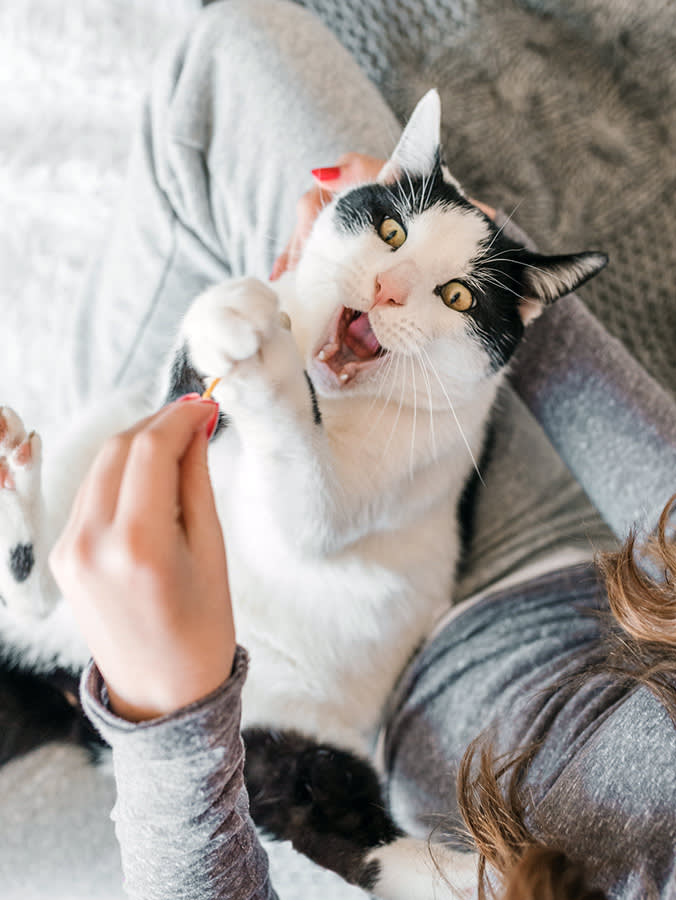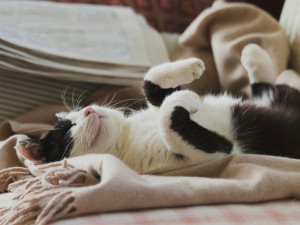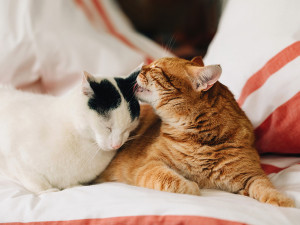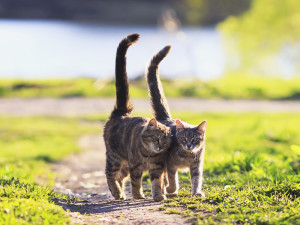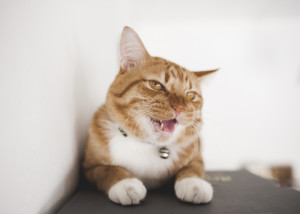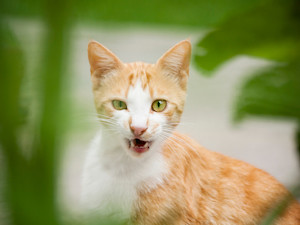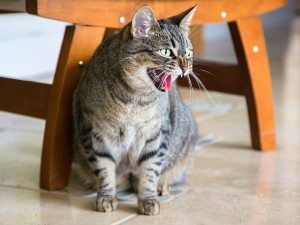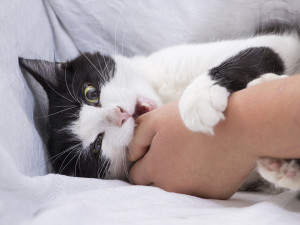Your Cat Can Make Nearly 300 Unique Facial Expressions, Study Finds
They’re not so mysterious after all.
Cats have a bit of a reputation for mystery. Unlike dogs, who often race toward their human parents for head rubs and conveniently communicate through tail wags, cats are generally known to be closed books. But a November 2023 studyopens in new tab published in Behavioural Processes is turning that perception on its head. The research found that cats are actually pretty expressive — in fact, they’re practically Meryl Streep level. The stereotypically elusive creatures are capable of making at least 276 unique facial expressions, according to researchers Lauren Scott and Dr. Brittany N. Florkiewicz, Ph.D.
Why study cat facial expressions?
Dr. Florkiewicz became obsessed with animal facial expressions in undergrad during an introductory biological anthropology course, she tells us.
Save on the litter with color-changing tech that helps you better care for your cat.
“One of the topics we covered in that course was primate behavior and cognition. I immediately became fascinated with non-human primate faces as we watched videoclips of their social interactions,” Dr. Florkiewicz says. “I noticed that they were capable of producing many different kinds of facial expressions, and I was fascinated with how human-like they appeared!” This fascination led her to study comparative psychology, which led to these findings that will forever live rent free in cat parents’ brains.
Dr. Florkiewicz and Scott decided to collaborate on the study, “Feline faces: Unraveling the social function of domestic cat facial signals,” when they realized there was a lack of research on feline facial expressions — and what little research existed wasn’t cutting it. “The few studies that were published on cat facial expressions were focused on expressions of pain or how cats communicate with humans,” Dr. Florkiewicz says. “But cats can be very social: They can live in multi-cat households or large colonies taking up entire islands. We wanted to see how cats used facial expressions to navigate affiliative and non-affiliative interactions with other cats.”
How much do you spend on your pet per year?
How did the research work?
To get to the bottom of their question, Scott and Dr. Florkiewicz set up shop at CatCafé Lounge in Los Angeles. For about a year, the team observed the behavior of 53 adult domestic shorthair cats using something called Facial Action Coding Systems (FACS). “FACS are systematic and standardized methods for identifying facial muscle movements (called Action Units, or AUs), and the combination of facial muscle movements creates an expression (AU Combination),” Dr. Florkiewicz explains.
This was no easy feat. “To use FACS, you must pass a certification test, as there are dozens of movements to remember and this process involves manual coding,” she says.
After combing through hours of recorded footage and manually coding every facial movement that was directed from one cat to another cat, the team concluded that cats can make 276 distinct facial expressions. Whisker movements, blinks, mouth movements, and ear positions were some of the facial components tracked to determine distinct expressions.
The number surprised the researchers. Compared to other species with documented AU combinations, cats were extremely expressive. “Gibbons can produce 80 different AU combinations, whereas chimpanzees can produce 357,” Dr. Florkiewicz says. “We need additional research using FACS to see how this compares to other species (such as dogs, humans, etc.). We know how many facial muscle movements these other species can produce, but not how many AU combinations they produce during communication.”
One of the recurring expressions researchers saw was a “common play face” that is shared between humans, dogs, and monkeys: The face occurs when animals lower their jaws and draw back the corners of their mouths. Another pattern noticed involved whisker movement; cats moved their whiskers toward each other during friendly interactions and away from each other during unfriendly ones.
“These findings show it is good to look at a cat’s ears, eyes, and whiskers to understand if they are feeling friendly,” Dr. Florkiewicz told Earth.comopens in new tab. “Their mouth provides a lot of information about whether a cat fight is likely. People may think that cats’ facial expressions are all about warning other cats and people off, but this shows just how social and tolerant pet cats can actually be.”
Why does it matter?
Scott and Dr. Florkiewicz’s work has real-life applications. “Our research is significant for understanding the impact of domestication on cat’s communicative behaviors and can be used to facilitate cat adoptions,” Dr. Florkiewicz says.
Shelters and cat parents can use information on cat facial signaling to better understand the nature of interactions between cats and potentially increase the odds of two paired cats getting along. “Understanding cat facial signals is crucial for assessing their interactions and relationships with other cats,” Dr. Florkiewicz says.
Notably, the majority of the facial expressions — 45 percent — were categorized as friendly, while only 37 percent were aggressive. Eighteen percent of the expressions were ambiguous. This debunks some popular beliefs about cat moodiness — it turns out they’re more likely to give a friendly “hello” than turn their noses up, after all. Well, at least to fellow cats. The jury’s still out on what faces they’re making at humans.
